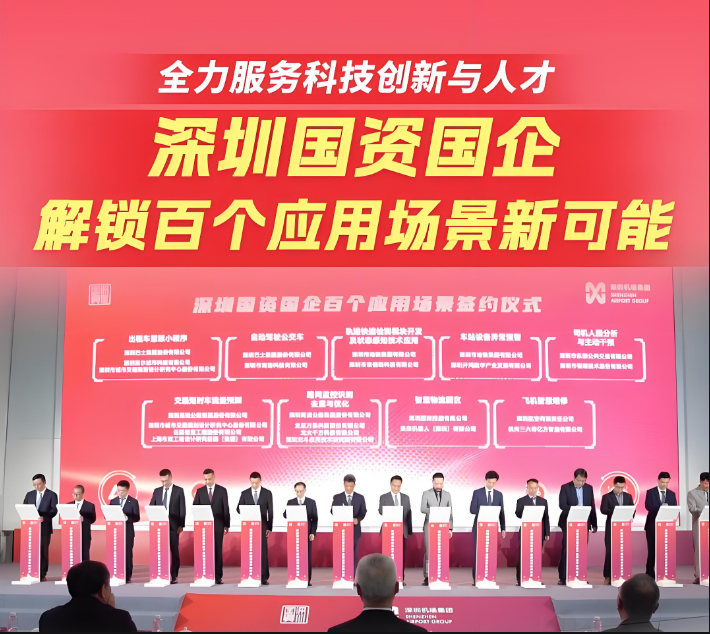Shenzhen State-Owned Assets System Creates 100 Strategic High-Value Application Scenarios
According to Shenzhen Special Zone Daily, the core challenge for SMEs in the technology sector has long been not R&D capability, but the lack of real-world implementation scenarios. A representative from the Municipal State-Owned Assets Supervision and Administration Commission (SASAC) stated: "Laboratory prototypes require validation in complex operating conditions, but companies cannot afford the cost of trial-and-error." Since 2025, Shenzhen SASAC has driven state-owned enterprises (SOEs) to transform from "resource holders" into "ecosystem co-builders." The first batch of 100 high-value application scenarios has become a critical testing ground for commercializing technologies, redefining traditional "heavy assets" as strategic resources in the innovation wave.
In early 2025, Shenzhen’s state-owned assets system initiated self-reform, positioning open scenarios as the cornerstone for "building the world’s best innovation ecosystem." The selection criteria for these 100 scenarios directly address industry pain points—focusing on Shenzhen’s "20+8" industrial clusters (covering AI, robotics, new energy, and other frontier fields).

Currently, 100 strategic, high-quality application scenarios are being rapidly developed. By bridging the gap in scenario deployment, Shenzhen’s SOEs provide "testing grounds" for new technologies and achievements of tech companies.
Proof of Concept: Efficiency Gains & Mutual Empowerment
The practice of Special Zone Construction Engineering Group is exemplary. After opening scenarios such as construction sites and transportation hubs, 17 smart devices were deployed for testing within six months. An automatic plastering robot increased construction efficiency by 40%, while a wall-climbing inspection robot reduced high-altitude work risks by 90%.
Scenario openness enables two-way empowerment, not one-way support. Shenzhen Metro Group and SF Express co-developed a "subway + autonomous vehicle" logistics system that transports goods during nighttime operational pauses, generating over RMB 30 million in annual added revenue.
Robotics: Prime Beneficiary of Open Scenarios
Robotics has emerged as the biggest beneficiary. SOEs including Shenye Group and Shenzhen Airport released 43 scenarios spanning childcare services, airport logistics, urban pipelines, and more. To date, 115 robots have undergone iterative upgrades in these "real-world proving grounds."
Infrastructure: Zero-Rent Spaces & Policy Support
Scenario openness requires physical infrastructure. In March 2025, Shenzhen launched 100,000 sqm of "zero-rent industrial space" across six sites, including Shenzhen Bay Science and Technology Eco-Park and Shenshan Science and Technology Eco-Park.
Official Commitment: Building an Innovation Ecosystem
Yang Jun, Director of Shenzhen SASAC, emphasized the Commission’s commitment to implementing municipal directives by:
1. Providing 100,000 sqm of low-cost, high-quality industrial space for tech enterprises;
2. Establishing state-owned funds covering the full lifecycle of innovation ventures, focusing on AI, robotics, semiconductors, and other cutting-edge fields;
3. Recruiting high-end talent and youth entrepreneurship teams, delivering information for ≥1,000 experts to tech firms annually;
4. Supporting SOEs in building 130 national/provincial innovation platforms and providing R&D public services ≥1,000 times;
5. Expanding concept-validation centers, pilot-testing bases, and tech-transfer institutions to reinforce Shenzhen’s status as a "top sci-tech hub" with optimal innovation ecosystems, talent development, and business environments.



